Introduction
Public transportation plays a pivotal role in the daily lives of Filipinos, as well as in the experience of travelers exploring the beautiful archipelago. With its vast network of varied transportation options, navigating the Philippine public transportation system can be both exhilarating and challenging for visitors. This guide aims to equip travelers with essential knowledge and tips to effectively navigate the country’s diverse modes of transportation.
Importance of public transportation in the Philippines
Public transportation serves as a lifeline for millions of Filipinos, connecting communities and facilitating economic activities. Due to rapid urbanization and a growing population, traffic congestion has become a prevalent issue in major cities like Manila. The significance of efficient public transport systems cannot be overstated, as they alleviate traffic congestion, reduce pollution levels, promote social inclusion, and enable easier access to education, healthcare, employment opportunities, and cultural landmarks.
The Philippines boasts an extensive public transportation network that consists of various modes suited for different needs and budgets. From iconic jeepneys traversing city streets to tricycles buzzing through narrow alleys in rural areas, buses shuttling passengers across provinces trains whisking commuters swiftly through metropolises like Manila, or ferries hopping between idyllic islands – each mode offers its unique charm while serving specific purposes.
Purpose of the guide: to help travelers navigate the Philippine public transportation system effectively
This comprehensive guide is specifically designed to assist tourists and travelers in understanding and utilizing the Philippine public transport system seamlessly. Navigating this intricate web may initially seem daunting; however, armed with knowledge about fare systems, payment methods, route planning techniques, safety precautions – even negotiating fares with tricycle drivers – visitors will gain confidence and independence while exploring all that this enchanting country has to offer.
Throughout this guide’s subsequent sections covering various modes such as jeepneys (the heartbeat of Philippine commuting), tricycles (the quirky local ride), buses, trains, and ferries, we will delve into the intricate details of each mode’s operations, specific guidelines for usage, fare structures, commonly encountered challenges, and tips for a smooth journey.
By providing practical insights and insider tips on navigating public transportation in the Philippines, this guide aims to empower travelers to immerse themselves fully in the vibrant Filipino culture and explore the country’s scenic wonders with ease. Let us embark on this journey together as we unravel the secrets of efficient travel within this archipelagic nation.
Overview of Public Transportation in the Philippines
Public transportation is a vital aspect of Filipino daily life and plays a significant role in connecting cities, towns, and even remote villages across the archipelago. With a diverse array of modes available, travelers have plenty of options to explore when navigating the Philippines. This section provides an overview of the different modes of public transportation, including jeepneys, tricycles, buses, trains, and ferries.
Jeepneys: Iconic Filipino Mode of Transport
When discussing public transportation in the Philippines, it is impossible not to mention jeepneys. These vibrant vehicles have become an iconic symbol of Filipino culture and are widely recognized for their eye-catching designs adorned with colorful paintings and decorations.
Jeepneys originated from military jeeps left by American forces after World War II but have since evolved into unique passenger-carrying buses. They operate on fixed routes within cities and provide an affordable mode of transportation for short to medium distances.
Tricycles: Popular in Rural Areas and Short Distances
In rural areas or suburban neighborhoods where jeepneys may not be as prevalent, tricycles reign supreme as a popular means of getting around. These three-wheeled vehicles consist of a motorcycle attached to a sidecar capable of carrying passengers.
Tricycles are ideal for short distances or traveling within smaller communities where jeepney routes may not extend. They offer convenience and flexibility as they can navigate through narrow streets that larger vehicles cannot easily access.
Buses: For Intercity and Long-Distance Travel
Buses serve as one of the primary modes for intercity travel across larger distances in the Philippines. From provincial towns to major cities like Manila or Cebu, buses connect different regions efficiently and comfortably.
Depending on the route’s length and popularity, bus services range from ordinary non-air-conditioned buses to deluxe coaches with air conditioning and more amenities. They provide a cost-effective option for travelers exploring the country’s diverse landscapes.
Trains: Manila’s LRT and MRT Systems
Manila, the bustling capital of the Philippines, offers two major train systems: the Light Rail Transit (LRT) and Metro Rail Transit (MRT). These urban railways are lifelines for commuters navigating through Metro Manila’s congested streets.
The LRT consists of two lines, LRT-1 and LRT-2, operating along major thoroughfares, while the MRT is an elevated railway that traverses Epifanio de los Santos Avenue (EDSA), one of the city’s busiest roads. Trains provide a faster alternative during rush hours and connect well with other modes of transportation in the metro.
Ferries: For Island Hopping and Coastal Travel
Given its archipelagic nature, traveling by ferry is a common mode of transportation in the Philippines, especially when hopping between islands or exploring coastal regions. Ferries come in various sizes and types, ranging from small outrigger boats called “bangkas” used for short trips to larger vessels that accommodate cars and trucks.
Whether cruising through picturesque destinations like Palawan or venturing to remote islands in Visayas or Mindanao, ferries offer scenic journeys along with convenient access to coastal communities. Overall, understanding the diverse range of public transportation options is crucial for travelers seeking to explore all corners of the Philippines efficiently.
Whether it be embracing the vibrant culture aboard jeepneys or enjoying scenic ferry rides across stunning island destinations, each mode has its unique charm. By familiarizing themselves with these various options, travelers can embark on unforgettable adventures while making their way through this beautiful Southeast Asian nation.
Understanding Fare Systems and Payment Methods
Different fare structures for each mode of transportation
Public transportation in the Philippines operates on a diverse range of fare structures, varying from one mode to another. Jeepneys, for instance, usually have fixed fares regardless of the distance traveled. These fares are prominently displayed inside the vehicle, enabling passengers to know how much they need to pay.
On the other hand, buses often have distance-based fares where passengers pay according to their destination. Trains in Metro Manila, such as the LRT and MRT systems, implement a zone-based fare system, which means that fares vary depending on the number of zones crossed during the journey.
Cash vs prepaid cards vs mobile payment options
When it comes to payment methods in Philippine public transportation, there are three main options: cash payments, prepaid cards, and mobile payment solutions. Cash payments are widely accepted across all modes of transportation.
Passengers can simply hand over their payment directly to the driver or conductor upon boarding.
Prepaid cards are increasingly popular as they offer convenience and often come with discounted fares or additional perks. These cards can be loaded with credit in advance and swiped upon entry or exit at designated card readers.
Moreover, some transport systems have embraced mobile payment options using smartphone technology. Companies like GrabPay and Beep allow users to link their bank accounts or credit cards with their mobile apps for seamless payments in various modes of transportation. This not only reduces reliance on physical cash but also provides an added layer of security for travelers.
Tips for negotiating fares with tricycle drivers
Tricycles are a unique mode of transport in the Philippines that requires negotiation skills when it comes to fares. Unlike metered taxis or regulated fare structures found elsewhere, tricycle rates are often up for discussion between drivers and passengers before commencing a trip.
To negotiate fares effectively, it’s essential to be polite and respectful. Start by asking the driver for the standard rate or a rough estimate of the fare to your destination.
This will give you an idea of what to expect and allow you to gauge whether the proposed amount is fair or not. If the initial offer seems unreasonable, don’t hesitate to politely negotiate for a lower fare that aligns with your budget.
It’s worth noting that negotiation may not always be possible in certain areas where fixed rates are implemented due to local regulations. In such cases, it’s crucial to research beforehand or ask locals for guidance on appropriate fares.
Additionally, if you’re unsure about pricing, consider asking fellow passengers or nearby vendors who can provide insights into fair pricing practices. Remember, maintaining a friendly demeanor and open communication can go a long way in reaching a mutually agreeable fare with tricycle drivers while ensuring a pleasant journey.
By understanding the fare structures and payment options available in Philippine public transportation, as well as cultivating effective negotiation skills with tricycle drivers, travelers can navigate this aspect of their journey with confidence and ease. These insights will help ensure a smooth experience while traveling around beautiful destinations across the Philippines.
Riding Jeepneys – The Heartbeat of Philippine Commuting
Overview of jeepney routes and destinations
Jeepneys are the most iconic mode of public transportation in the Philippines, often described as the heartbeat of Philippine commuting. These colorful and uniquely designed vehicles can be found bustling through the streets of Metro Manila and beyond.
Understanding jeepney routes and destinations is crucial for navigating this popular mode of transport effectively. Jeepney routes can be categorized into two types: fixed and flexible.
Fixed routes follow a predefined path, while flexible routes allow passengers to request stops along their journey. To navigate jeepney routes, it’s important to familiarize yourself with destination signboards displayed on the front or sides of the vehicle.
These signboards indicate the major destinations served by each jeepney route, making it easier for passengers to determine if a particular route aligns with their intended destination. Furthermore, hand signals are commonly used to communicate with jeepney drivers indicating your desired stop or signaling that you want to hop on board.
Getting Around by Tricycles – The Quirky Local Ride
Types of tricycles (motorized vs non-motorized)
Tricycles are another popular mode of transportation in the Philippines, especially in rural areas where they serve as a primary means for short-distance travel.
There are two main types of tricycles: motorized tricycles known as “trikes” and non-motorized tricycles known as “pedicabs” or “sikads.” Motorized tricycles are equipped with small motorcycle engines while pedicabs rely on human pedal power. Motorized tricycles are more commonly found in urban areas where they offer convenient door-to-door transportation services.
They provide a comfortable seating arrangement for passengers and have designated terminals where they pick up and drop off passengers. On the other hand, pedicabs are typically seen in smaller towns and rural areas where they operate on a more localized scale, transporting passengers within a limited radius.
Exploring Beyond Metro Manila by Ferry
An island-hopping adventure
While Metro Manila has an extensive network of buses, trains, and jeepneys, exploring beyond the city’s borders often requires alternative means of transportation. Ferries play a vital role in coastal travel and island-hopping adventures in the Philippines.
With over 7,100 islands comprising this archipelago nation, ferries provide a scenic and efficient mode of transport to reach various destinations. Ferry services operate between major ports and connect different islands, enabling travelers to experience the stunning beauty of the Philippines’ coastal regions.
Whether you’re planning to visit popular tourist spots like Boracay or Palawan or venture off-the-beaten-path to remote islands, ferry services offer a unique way to explore the country’s diverse landscapes. Depending on your destination, ferry schedules may vary so it is advisable to check their availability in advance.
Navigating Metro Manila’s Major Transport Hubs
Efficient connections for seamless travel
Metro Manila serves as the central hub for transportation within the Philippines. To navigate this bustling metropolis effectively, it is essential to familiarize yourself with its major transport hubs. The Ninoy Aquino International Airport (NAIA) is the primary gateway for international travelers arriving in Manila.
From NAIA, numerous transport options are available including taxis and ride-hailing services that can take you directly to your destination or connect you with other modes of transportation. For intercity and long-distance travel by bus or provincial jeepneys, two major bus terminals – Cubao and Pasay – serve as convenient starting points.
These terminals offer various routes covering different parts of Luzon Island including nearby provinces and popular tourist destinations. It is important to note that each terminal has several bus companies operating within, so determining the specific company and destination is crucial to ensure a smooth journey.
Metro Manila’s Light Rail Transit (LRT) and Metro Rail Transit (MRT) systems provide a rapid transit network within the city. These elevated rail systems offer efficient transportation options for commuters, connecting major districts and landmarks of Metro Manila.
With multiple stations strategically located throughout the city, LRT and MRT present an affordable and convenient means of getting around while avoiding traffic congestion often experienced on the roads. By understanding the layout of Metro Manila’s major transport hubs, travelers can efficiently navigate their way through this bustling metropolis, ensuring a seamless travel experience across different modes of transportation.
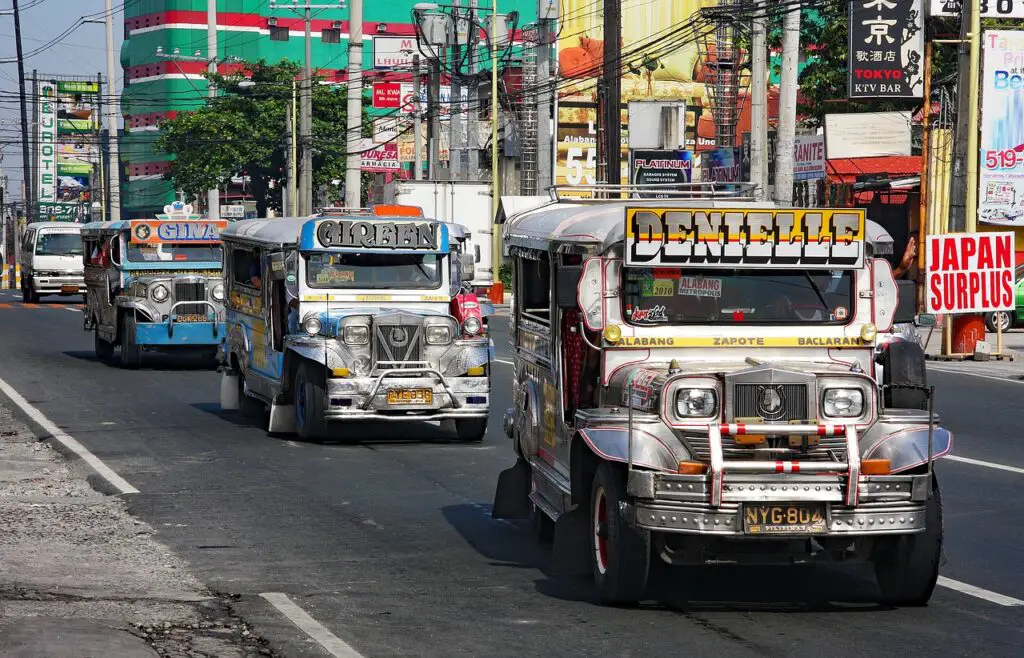
Conclusion
As you venture beyond Metro Manila to explore the diverse beauty of the Philippines, rest assured that public transportation options are available to facilitate your journey. From island hopping adventures with their pristine beaches to interisland ferries that connect different islands, there are numerous ways to travel between destinations while enjoying picturesque views along the way. Moreover, cultural heritage sites beckon with their rich history waiting to be discovered.
Whether you’re planning a trek through rural landscapes or seeking mountain escapades, public transportation networks ensure accessibility even in remote areas. So pack your bags and embrace the wonders that lie beyond Metro Manila!
With an efficient understanding of fare systems and payment methods detailed earlier in this guide, navigating public transportation will be a breeze. Embark on your Philippine adventure with enthusiasm as you create unforgettable memories while getting around this beautiful country.
Related Posts
-
DMW Mobile App and OFW Pass: A Step-by-Step Guide for Seamless Application
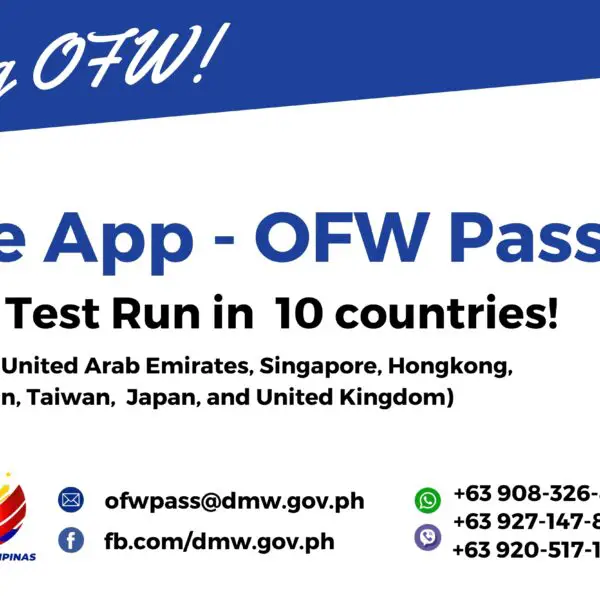
Discover the convenience of applying for your OFW Pass using the DMW Mobile App. Follow our comprehensive step-by-step guide for a seamless application process. Your journey to hassle-free documentation starts here.
-
Navigating Public Transportation: A Traveler’s Guide to Getting Around the Philippines
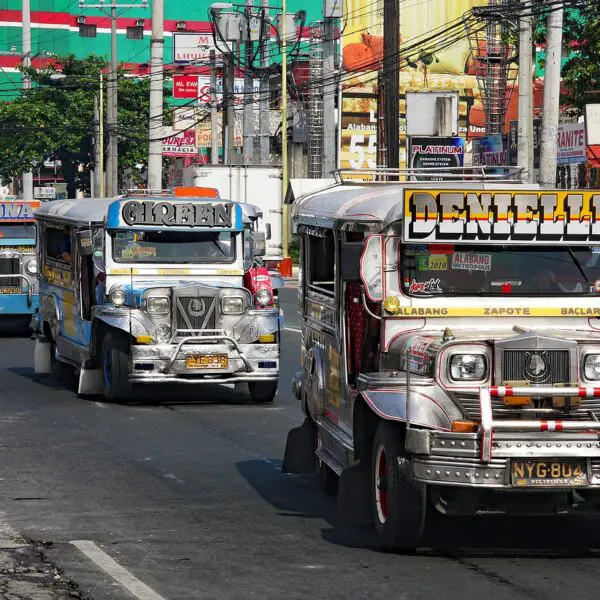
Master the art of navigating Philippine public transportation with this detailed guide, from jeepneys to tricycles and beyond. Travel with confidence.
-
Travel tips for Christmas in the Philippines

Discover the enchanting Philippines during Christmas with this detailed travel guide. Immerse in local traditions, explore festive destinations and make unforgettable memories.
-
Backpacker’s Guide to the Philippines: Destinations and Tips

Embark on an unforgettable adventure through the Philippines with our comprehensive backpacker’s guide. Discover hidden gems, stunning islands, and practical travel tips. Start your journey now!
-
Singapore Travel Tips: Explore During Taylor Swift’s Era Tour
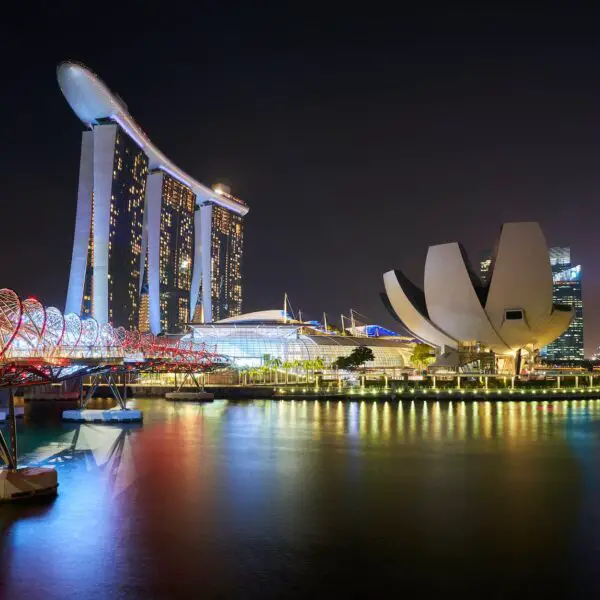
Uncover Singapore’s beauty and enjoy Taylor Swift’s Era Tour with our detailed travel tips. Discover iconic landmarks, local cuisine, and more!
-
A Comprehensive Comparison of Station 1, Station 2, and Station 3 in Boracay

Discover the contrasting charms of Boracay’s Station 1, Station 2, and Station 3 in this comprehensive comparison. Unveil the best beach experience!
-
Boracay Island Unveiled: A Comprehensive Guide to Paradise
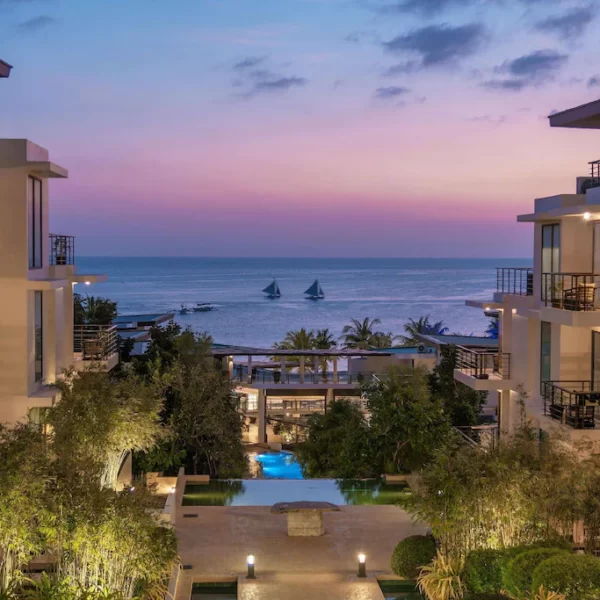
Discover the exquisite paradise of Boracay Island through our detailed travel tips. From stunning beaches to thrilling water activities, plan your ultimate getaway now!